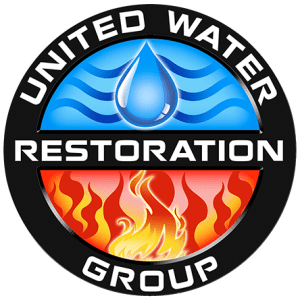Can Water Damaged on Carpet Be Saved? Yes! Although water damage on carpets can be a homeowner’s nightmare, not all has to be lost. Swift and appropriate action can salvage your carpet and prevent long-term issues like mold in the carpet from water damage. In this detailed guide, we will discuss the process of restoring water-damaged carpets, helping you reclaim the comfort and aesthetics of your living space.
Assessment and Safety Measures
- Safety First: Before diving into the water restoration process, ensure that the affected area is safe to enter. Turn off the electricity to avoid electrical hazards if water has come into contact with electrical outlets or appliances.
- Identify the Source: Understand the source of the water damage, whether it’s from a burst pipe, flooding, or a leak. Address the source to prevent further damage.
- Document and Remove Items: Document the damage for insurance purposes, and remove furniture and other items from the affected area to expedite the drying process.
Extraction and Drying
- Remove Standing Water: Use a wet/dry vacuum, towels, or mops to remove standing water from the carpet. The sooner you start this process, the better the chances of salvaging the carpet.
- Ventilate the Area: Increase air circulation by opening windows and using fans. This aids in the drying process and helps prevent mold growth.
- Utilize Dehumidifiers: Dehumidifiers are effective in reducing excess moisture in the air, further promoting the drying of the carpet and preventing mold development.
Cleaning and Sanitizing
- Clean with a Carpet Cleaner: After the carpet is mostly dry, use a carpet cleaner or a mixture of mild detergent and water to clean the affected area. Test a small, inconspicuous area first to ensure the cleaning solution doesn’t cause discoloration.
- Disinfect the Carpet: Water damage can introduce bacteria and contaminants. Disinfect the carpet using a solution of water and white vinegar or a commercial disinfectant.
- Treat for Mold: If water damage is severe or prolonged, there’s a risk of carpet water damage mold. Apply a mold inhibitor or a mixture of water and tea tree oil to discourage mold.
Carpet Water Damage Restoration and Prevention
Professional Assessment: Consider consulting with a professional carpet cleaning service for a thorough assessment and treatment. They have specialized equipment and expertise to handle water-damaged carpets effectively.
Should Carpet Be Replaced After Water Damage?
Whether or not to replace carpet after water damage depends on several factors, including the severity of the damage, the type of water involved, and how quickly you can address the issue. Here are some considerations to help you decide:
Category of Water Damage:
- Clean Water (Category 1): If the water damage involves clean water from a burst pipe or supply line, and if you address the issue promptly, there’s a higher chance of salvaging the carpet through thorough cleaning and drying.
- Contaminated Water (Categories 2 and 3): If the water is contaminated, such as from a sewage backup or flooding, it is generally recommended to replace the carpet. Contaminated water can introduce harmful bacteria, pathogens, and other contaminants that are challenging to completely remove.
Extent of Damage:
- Limited Damage: If the water damage is localized and the carpet is still in good condition, you may be able to salvage it by following proper drying and cleaning procedures.
- Extensive Damage: If the water has saturated a large area, or if the carpet padding is significantly affected, replacement may be the more practical and hygienic choice.
Duration of Exposure:
- Quick Response: The sooner you address water damage, the better the chances of saving the carpet. Quick extraction of water and thorough drying can prevent mold growth and reduce the need for replacement.
- Extended Exposure: If the carpet remains wet for an extended period, mold growth becomes more likely, and the structural integrity of the carpet may be compromised.
Type of Carpet:
- Natural Fibers: Carpets made of natural fibers, such as wool, are more susceptible to water damage and may require replacement if the damage is significant.
- Synthetic Fibers: Synthetic carpets are generally more resistant to water damage, and in some cases, they may be easier to clean and salvage.
Pre-existing Conditions:
- Old or Worn Carpets: If the carpet is already in poor condition or nearing the end of its lifespan, water damage may accelerate the need for replacement.
Will Carpet Dry Out After a Water Leak?
Various factors, including the extent of the water damage, the type of water involved, and how quickly and effectively you address the issue will determine whether a carpet will dry out after a water leak. The following are some key considerations:
- Quick Response is Crucial
- Clean Water vs. Contaminated Water
- Proper Drying Techniques
- Carpet Material
- Ventilation
- Regular Monitoring
- Professional Assistance

How Long Can Carpet Be Wet Before It’s Ruined?
The timeframe for a wet carpet to become ruined depends on various factors, including the type of water involved, the extent of saturation, the carpet’s material, and environmental conditions.
Clean Water (Category 1):
If the water involved is clean, such as from a burst pipe or a leak, you typically have a window of about 24 to 48 hours to begin drying the carpet before the risk of mold growth increases significantly.
Acting promptly within this timeframe can often allow for successful drying and salvaging of the carpet.
Contaminated Water (Categories 2 and 3):
If the water is contaminated, such as from a sewage backup or flooding, the timeline for salvaging the carpet is shorter.
In these cases, the carpet may become a breeding ground for harmful bacteria and pathogens within a matter of hours.
Extent of Saturation:
The more extensive the saturation, the higher the risk of irreversible damage. Carpets saturated with water may start to delaminate (separation of carpet layers) and lose their structural integrity.
Type of Carpet Material:
Synthetic carpets may have a better chance of recovery compared to natural fiber carpets like wool. However, prolonged exposure to water can still compromise the structure and integrity of synthetic carpets.
Environmental Conditions:
Humidity levels, temperature, and ventilation in the affected area play a crucial role in the drying process. Warmer temperatures and good ventilation can expedite drying.
In any case, the longer a carpet remains wet, the higher the risk of permanent damage and the need for replacement. Regularly monitor the drying progress, address any signs of mold promptly, and consider seeking professional assistance for a more comprehensive assessment and restoration.
Call UWRG To Assist With Water Damaged Carpets
In conclusion, dealing with water-damaged carpets requires timely, expert attention to prevent further damage and ensure a healthy living environment. If you’re facing such a challenge, don’t hesitate to call United Water Restoration Group (UWRG). Our certified technicians specialize in swiftly addressing water damage, employing state-of-the-art techniques to restore your carpets to their former glory. We work directly with your insurance carrier, easing your burden and ensuring a smooth, professional experience.
Whether it’s for an immediate restoration need or to discuss our range of carpet water damage services, including our franchise opportunities, contact UWRG today and take the first step towards a stress-free solution for your water damage woes.





